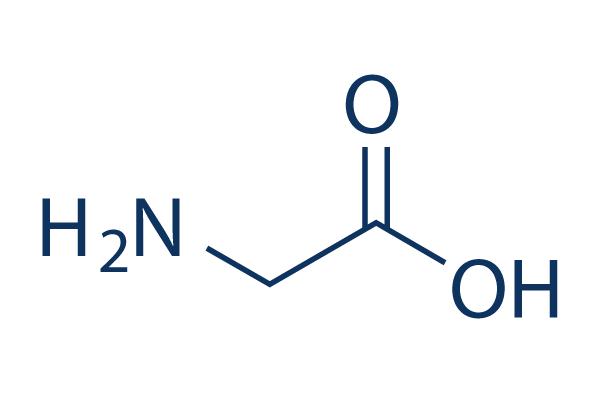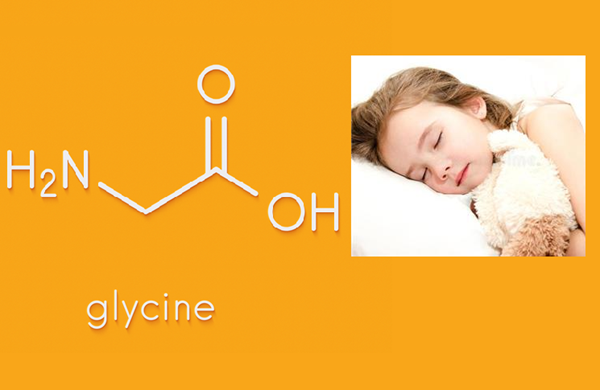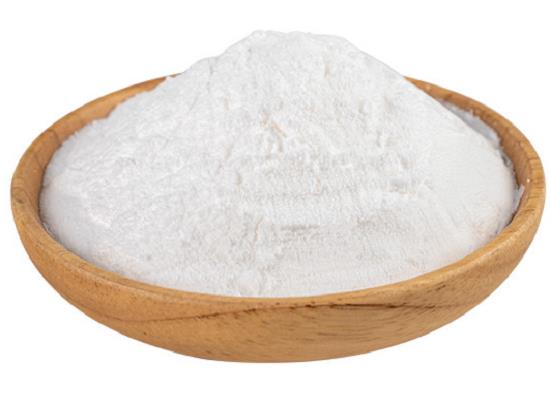Synthesis and Clinical implications of Glycine
Glycine is integral to the formation of α-helix in the protein. Glycine acts as an inhibitory neurotransmitter. It also acts as a coagonist along with glutamate, facilitating the excitatory potential at the NMDA glutamate receptor.

Discovery
Henri Braconnot discovered glycine in hydrolyzing gelatin in 1820. Auguste Cahours determined that glycine is an amine of acetic acid.1 It has been known since the 1950s that glycine has inhibitory effects on spinal neurons. The neurotransmitter role of glycine was discovered in the late 1960s.2 Glycine is also involved in cnidarian neurotransmission.
Properties
Mr 75.07. Glycine is very soluble in water, insoluble in ethanol and ethyl ether, and slightly soluble in acetone.
Glycine is amphoteric in water. Glycine appears as white crystals.
Synthesis and release
Gene, mRNA, and precursor Glycine is converted from serine by serine hydroxymethyltransferase and pyridoxal phosphate as the cofactor. In the liver, glycine synthesis is catalyzed by glycine synthase.
Tissue distribution
Serine hydroxymethyltransferase activities are ubiquitously distributed in rats.
Plasma concentration
The concentration of glycine was 199.5mM in human serum.The half-life of glycine varies between 0.5 and 4.0 h.
Regulation of synthesis and release
The glycine fluxes in the central nervous system(CNS) are regulated by two specific transporters for glycine, GlyT1 and GlyT2.
Target cells/tissues and functions
Glycine is involved in the production of DNA, phospholipids, and collagen as well as the release of energy. Glycine is integral to the formation of α-helices due to its simple side chain. Glycine is the most abundant amino acid in collagen triple helices. Glycine is an inhibitory neurotransmitter in the CNS, especially in the spinal cord and brainstem.
Glycine is released from the Renshaw cell as an inhibitory neurotransmitter in the anterior horn of the spinal cord. Glycine also acts as a coagonist with glutamate at N-methyl-D-aspartate receptors in all regions of the CNS.
Phenotype of gene-modified animals
The involvement of the glycine receptor α2 subunit on the effects of low and high doses of ethanol was studied using mice lacking glycine receptor α2 subunits. Differences in behavioral studies for ethanol consumption and sedation between the wild-type and glycine receptor α2 knockout mice suggested that glycine receptors are biologically relevant targets for the sedative and rewarding properties of ethanol.
Clinical implications
Hereditary hyperekplexia (familial startle disease, STHE) is an autosomal dominant neurologic disorder characterized by marked muscle rigidity of CNS origin and an exaggerated startle response to unexpected acoustic or tactile stimuli. Point mutations were identified in the gene encoding the glycine receptor α1 subunit in STHE patients.
You may like
Related articles And Qustion
See also
Lastest Price from Glycine manufacturers

US $1200.00-1100.00/ton2025-10-13
- CAS:
- 56-40-6
- Min. Order:
- 1ton
- Purity:
- 99%
- Supply Ability:
- 1000T/M

US $0.00/Kg/Drum2025-04-21
- CAS:
- 56-40-6
- Min. Order:
- 1KG
- Purity:
- 98.5%-101.5%;USP
- Supply Ability:
- 10 TONS





